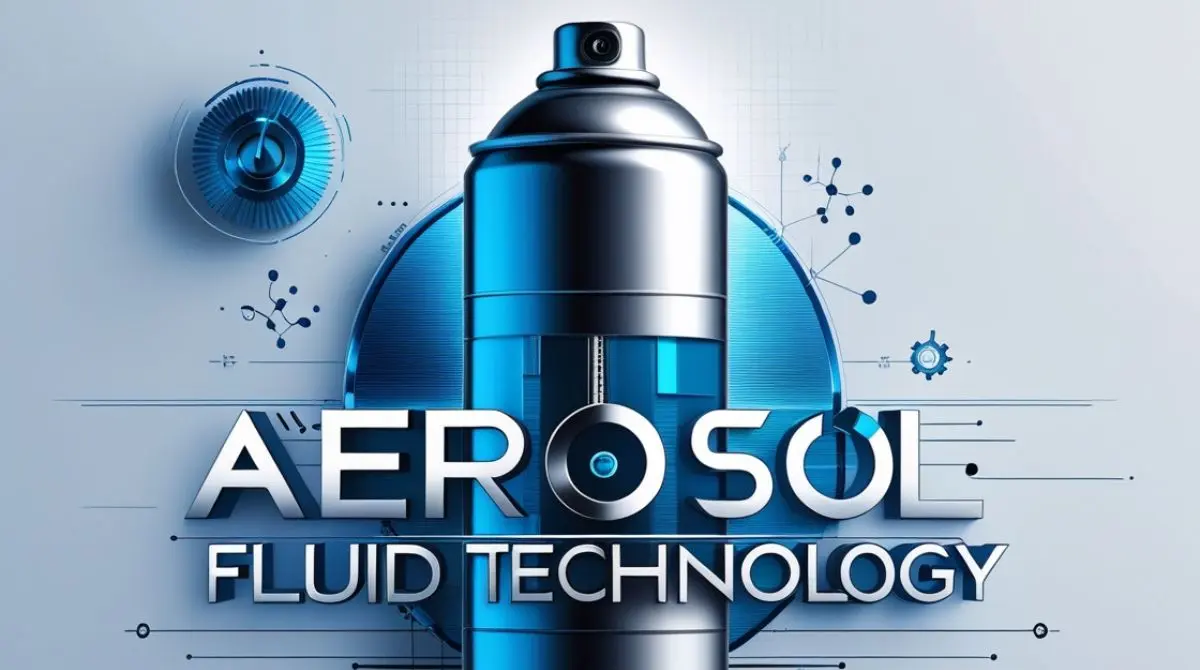Aerosol fluid technology has revolutionized various industries by enabling the efficient delivery of liquids in fine mist or spray forms. This technology is integral to products ranging from household cleaners and personal care items to industrial lubricants and medical inhalers. Understanding its mechanisms, applications, and advancements provides insight into its widespread utility and the innovations driving its evolution.
Understanding Aerosols
An aerosol consists of fine particles or droplets suspended in a gas. In aerosol fluid technology, liquids are transformed into a fine mist, allowing controlled application over a targeted area. This process is achieved through atomization methods, each tailored to specific applications and desired outcomes.
Mechanisms of Atomization
Atomization is the process of breaking up a liquid into fine droplets. Several methods are employed to achieve this:
- Pneumatic Atomization: Utilizes high-velocity air streams to shear liquids into fine droplets. This method is commonly used in applications where a fine mist is required, such as in spray painting and certain types of industrial cleaning.
- Ultrasonic Atomization: Employs high-frequency vibrations to create a standing wave on the liquid surface, leading to droplet formation. This method is beneficial in applications like humidifiers and medical nebulizers, where precise control over droplet size and distribution is crucial.
- Electrospray Atomization: Involves applying a high electric field to a liquid to produce a fine spray of charged droplets. This technique is widely used in mass spectrometry for ionizing large biomolecules and in the fabrication of nanoparticles for various applications.
- Flow Focusing: This technique uses a continuous phase fluid to focus a dispersed phase fluid through a small orifice, producing fine droplets or bubbles. Flow focusing is particularly useful in creating monodisperse emulsions and microcapsules for drug delivery and other applications.
Historical Evolution of Aerosol Technology
The development of aerosol spray technology has significantly influenced how products are packaged, stored, and dispensed. The first aerosol spray can was introduced in 1927, marking a pivotal moment in product delivery systems. This innovation has since evolved, impacting various sectors from consumer goods to military applications, and has played a crucial role in technological advancements, environmental challenges, and industrial trends.
Applications Across Industries
The versatility of aerosol fluid technology has led to its adoption in numerous sectors:
- Medical Field: Aerosolized medications, such as inhalers for respiratory conditions, rely on precise droplet sizes to ensure effective delivery to the lungs. Advances in aerosol generation have enhanced the efficacy and comfort of these treatments.
- Personal Care Products: Items like deodorants, hairsprays, and perfumes utilize aerosol technology to provide even application and fine misting, improving user experience.
- Industrial Applications: Lubricants and coatings are often applied as aerosols to ensure uniform coverage, reduce waste, and reach intricate components. For instance, aerosol-based nanoparticles have been developed for applications in various diseases, showcasing the technology’s potential in medical treatments.
- Household Products: Cleaning agents and disinfectants in aerosol form allow for easy application over large surfaces, enhancing convenience and efficiency.
Innovations and Research
Continuous research is propelling aerosol fluid technology forward:
- Acoustic Resonance in Aerosol Generation: Studies have demonstrated that surface acoustic waves (SAWs) can stabilize liquid micro-domes, leading to efficient droplet production. This advancement holds potential for applications in biomolecule inhalation therapy and material deposition.
- Advancements in Nanostructuring: Recent research has highlighted the significant impact of nanoscale particles (NSPs) on technological advancements for energy and environmental applications. These developments have opened new avenues for aerosol technology in various fields.
Challenges and Considerations
Despite its advantages, aerosol fluid technology faces challenges:
- Environmental Impact: Traditional aerosols often used chlorofluorocarbons (CFCs) as propellants, contributing to ozone depletion. Modern formulations have shifted to more environmentally friendly propellants, but concerns about volatile organic compounds (VOCs) persist.
- Health Implications: Inhalation of aerosolized particles, especially in industrial settings, can pose respiratory risks. Ensuring proper ventilation and protective measures is essential.
- Technical Limitations: Achieving uniform droplet size and distribution remains a technical challenge, particularly for applications requiring high precision. Ongoing research aims to address these limitations.
Future Prospects
The future of aerosol fluid technology is promising, with several trends emerging:
- Sustainable Practices: Development of eco-friendly propellants and formulations aims to reduce environmental impact, aligning with global sustainability goals.
- Advanced Medical Applications: Enhanced aerosol delivery systems are being designed for targeted drug delivery, improving treatment efficacy for respiratory diseases and beyond.
- Integration with Smart Technologies: Incorporating sensors and IoT connectivity into aerosol devices could enable real-time monitoring and control, optimizing performance across various applications.
Conclusion
Aerosol fluid technology is a dynamic field with extensive applications across multiple industries. Ongoing innovations and research continue to expand its potential, addressing existing challenges and paving the way for more efficient and sustainable solutions.
Frequently Asked Questions
What is aerosol fluid technology?
Aerosol fluid technology involves turning liquids into a fine mist or spray, known as an aerosol. This allows for controlled and efficient application of products like paints, medicines, or cleaning agents. The process uses pressurized gas to disperse the liquid in tiny droplets, making it easy to apply evenly over surfaces.
How do aerosol cans work?
Aerosol cans contain a liquid product mixed with a propellant gas under pressure. When you press the nozzle, the pressure forces the liquid mixture out through a small opening, creating a fine spray or mist. This design ensures the product is applied evenly and reaches difficult areas.
Are aerosol products safe for the environment?
In the past, some aerosol products used chlorofluorocarbons (CFCs), which harmed the ozone layer. Today, manufacturers use more environmentally friendly propellants, reducing the impact on the ozone layer. However, some aerosols still release volatile organic compounds (VOCs), which can contribute to air pollution. It’s important to use these products responsibly and dispose of them properly.
What are common uses of aerosol technology?
Aerosol technology is used in many everyday products. In households, it’s found in items like spray paints, deodorants, and cooking sprays. In healthcare, inhalers deliver medication directly to the lungs. Industries use aerosols for applying lubricants, paints, and coatings efficiently.
How should I dispose of aerosol cans?
Proper disposal of aerosol cans is important for safety and environmental reasons. If the can is empty, it can often be recycled with other metal cans. If it still contains product, check local guidelines for hazardous waste disposal, as the contents and pressurized nature can be dangerous if not handled correctly.
Can aerosol products affect my health?
When used as directed, most aerosol products are safe. However, inhaling the spray intentionally or using it in confined spaces without ventilation can lead to health issues like dizziness or respiratory problems. Always use aerosol products in well-ventilated areas and follow the instructions on the label.
What advancements are being made in aerosol technology?
Recent advancements focus on improving the environmental footprint and efficiency of aerosol products. Developments include using more sustainable propellants, designing cans that use less material, and creating products that deliver the same performance with fewer VOCs.



